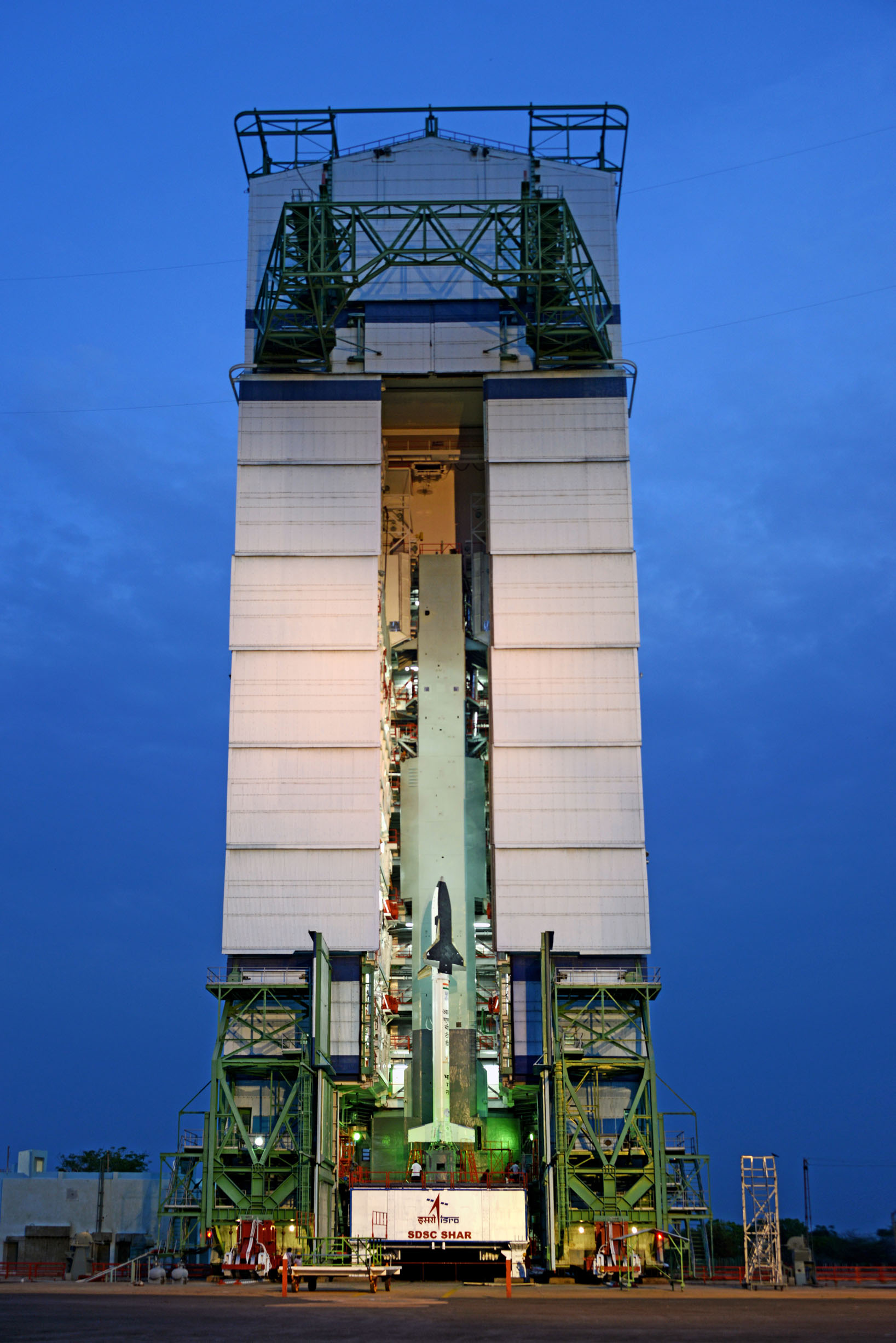India's 1st Mini 'Space Shuttle' Test Launch in Pictures
Meet India's 1st Space Plane

On May 23, 2016, India launched the first test flight of its Reusable Launch Vehicle Technology Demonstrator, a winged, unmanned spacecraft that resembles a miniature space shuttle. Built by the Indian Space Research Organisation, the craft - called the Reusable Launch Vehicle-Tehnology Demonstrator (RLV-TD) - is designed to test the technologies needed to build a fully reusable orbital space plane. See photos from India's space plane test flight here. Read our full story on India's space plane test flight here.
A Mini Space Shuttle

This image truly shows the small scale of India's RLV-TD space plane as compared to a human engineer. With its snub nose and delta wing, the RLV-TD looks like a miniature NASA space shuttle with twin tails similar to the U.S. Air Force's robotic X-37B space planes. Read our full story on India's space plane test flight here.
Getting a Boost

To launch the RLV-TD mission (ISRO officials called the test flight Hex-01), ISRO used an unmanned HS9 solid rocket booster. The booster and space plane are seen here at their launch pad at the Satish Dhawan Space Centre, Sriharikota. Read our full story on India's space plane test flight here.
Space Plane and Rocket

For its first test flight, the RLV-TD space plane was attached to the top of its HS9 booster rocket. Unlike the U.S. Air Force's orbital X-37B space planes (which are covered by a protective nosecone during launch), the RLV-TD apparently had no need for such a shroud. Read our full story on India's space plane test flight here.
Behold: India's Space Plane

The shuttle-like design of India's RLV-TD space plane is on clear display in this stunning image of the craft perched atop its HS9 solid rocket booster ahead of launch. Read our full story on India's space plane test flight here.
Liftoff for India's RLV-TD

ISRO launched the RLV-TD test flight on Monday, May 23, 2016 at 7 a.m. local time (IST). The HS9 solid rocket booster was designed to fire for just 91.1 seconds. Read our full story on India's space plane test flight here.
Hitting Mach 5

During the ascent, the HS9 rocket booster accelerated India's RLV-TD space plane to a maximum hypersonic speed of Mach 5 (about five times the speed of sound). Once the HS9 booster burned out, it separated from the space plane as both were flying nearly 35 miles (56 kilometers) above Earth. Read our full story on India's space plane test flight here.
Get the Space.com Newsletter
Breaking space news, the latest updates on rocket launches, skywatching events and more!
Onward and Upward

The RLV-TD space plane continued to coast upward to a maximum altitude of 40 miles (65 kilometers) before beginning the descent back to Earth. While flying at Mach 5, the RLV-TD was successfully able to steer through a series of maneuvers, ISRO officials said in a statement. Read our full story on India's space plane test flight here.
A Test Flight Success

India's RLV-TD space plane successfully flew itself back to a preplanned "landing" site in the Bay of Bengal and clearly survived the superhot temperatures of re-entry, according to ISRO officials, who dubbed the test flight a success. From launch to splashdown, the mission lasted about 770 seconds, with the RLV-TD flying about 280 miles (450 km) before touchdown. Read our full story on India's space plane test flight here.
Join our Space Forums to keep talking space on the latest missions, night sky and more! And if you have a news tip, correction or comment, let us know at: community@space.com.

Tariq is the Editor-in-Chief of Space.com and joined the team in 2001, first as an intern and staff writer, and later as an editor. He covers human spaceflight, exploration and space science, as well as skywatching and entertainment. He became Space.com's Managing Editor in 2009 and Editor-in-Chief in 2019. Before joining Space.com, Tariq was a staff reporter for The Los Angeles Times covering education and city beats in La Habra, Fullerton and Huntington Beach. In October 2022, Tariq received the Harry Kolcum Award for excellence in space reporting from the National Space Club Florida Committee. He is also an Eagle Scout (yes, he has the Space Exploration merit badge) and went to Space Camp four times as a kid and a fifth time as an adult. He has journalism degrees from the University of Southern California and New York University. You can find Tariq at Space.com and as the co-host to the This Week In Space podcast with space historian Rod Pyle on the TWiT network. To see his latest project, you can follow Tariq on Twitter @tariqjmalik.
